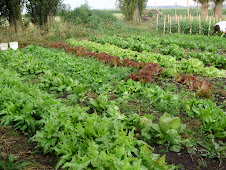
Many years ago a number of different breeds of livestock existed throughout the world. With the commercialization of livestock, breeders selected a small number of breeds that met their economic needs and production practices. These breeds were then bred to achieve specific traits and soon after every other breed began to disappear. This left a number of livestock breeds that had been around for hundreds of years close to extinction. Over the last few decades, organizations like the American Livestock Breeding Conservancy began working to restore these rare breeds and bring them back from the brink of extinction.
Unfortunately, the traits that worked for commercial farms are not well suited to small farmers who shun commercial practices. These rare breeds of livestock have valuable traits and we wanted to highlight the benefits of these breeds, and that is one of the primary reasons for starting Heritage Lane Farms.
We started with Large Black Pigs, which is an English breed that originated in Cornwall, Devon, and Somerset in southwestern England. This breed was popular until the 1920's when it fell out of favor to more commercially accepted breeds like Yorkshire and Hampshire, which grow more quickly and are easily adaptable to confinement operations. By the 1960's Large Blacks were almost extinct, and even now they remain on the critical list of the American Livestock Breeding Conservancy with only a few hundred breeding pigs in the world. Our pigs came from Texas and there is only one other farm in Washington that we are aware of that raise Large Blacks.
Large Blacks are pasture raised and eat primarily grass, with only a small amount of grain (whereas commercial breeds eat a diet entirely of grain). Large Blacks grow more slowly and can take as long as a year to reach a weight where they can be butchered. The upside is that they are leaner and have a texture and taste that is very different from pork you buy in the store. The other upside is the Large Blacks are less aggressive (they act more like a family dog than a pig) and the boars are not aggressive and can remain with the piglets and sow. The downside of the commercial breeds and production practices is that boars are very aggressive and must be separated from the sow and litter at all times.
We currently have one boar (Lancelot) and one guilt (Guinevere) and our first litter of pigs is expected at the end of September. Both were born in May 2008 at a farm in Texas. They will be bred twice a year and each litter will have about 10 piglets, although the first litter will likely be smaller than that.
It was somewhat of a miracle that we were able to get them as there is a very short list of Large Black breeders and every one that I had contacted was sold out. Last October we contact Cathy Cox at Oleo Acres farm in Leonard Texas who happened to have a guilt and a boar left and it just happened that a person from Walla Walla was driving down in early November to pick up a number of pigs, so ours went along for the ride. At $300 a piece they are much more expensive then finding a local pig on Craigslist, but they have been well worth the extra money.
The Large Blacks were the unofficial start of Heritage Lane Farms and since then we have added Navajo-Churro Sheep and will soon be adding additional breeds of sheep, pigs, and poultry. Each of these will be highlighted in future posts as we work to educate the community on the benefits of rare breed livestock.



No comments:
Post a Comment